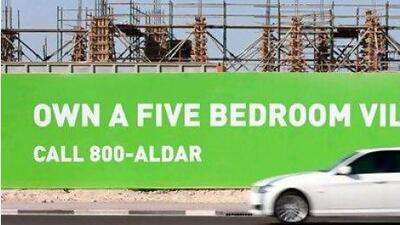GCC nationals will live only in detached villas. So runs the conventional wisdom, and if we look around the region today, developers are building almost nothing but detached villas for them.
Yet if the region is to create the 500,000 or so homes that it needs, as estimated by Jones Lang LaSalle last year in a report titled Why Affordable Housing Matters, we have to go beyond villas, and that means diversifying supply and redirecting demand.
Desire for villas is almost universal. As the University of Illinois professor Robert Bruegmann wrote in his book Sprawl: "Polls consistently confirm that most Europeans, like most Americans, and indeed most people worldwide, would prefer to live in single-family houses on their own piece of land rather than in apartment buildings."
Similarly, 80 per cent of American respondents said that is what they wanted, according to a survey last year by the US organisation the National Association of Realtors.
The reasons for this desire are easy to identify. People perceive a villa as private and quiet, with outdoor spaces in which children can play. Also, villas may be expandable as families grow and are often associated with a higher social status.
Why then is it so important to consider other housing choices, such as semi-detached houses, terrace houses, duplexes and apartments?
Simply, it is because the health of our cities, and hence of our economies and our nations, depends on diversifying beyond the detached villa.
To begin with, there is cost. As more people live in cities, land prices rise, and villas that would be affordable far from towns and jobs will be unaffordable closer in. However, spreading out raises the cost of ancillary infrastructure - roads and utilities - that has to be covered directly or indirectly by house prices, driving detached residences out of the reach of most people.
Detached villas are also ecologically stressful, adding to our rate of land and energy consumption.
Villas mean several cars for each household, which in turn contributes to rising levels of greenhouse-gas emissions, air pollution, traffic congestion, and obesity, as shown by studies such as the US-based Urban Land Institute's 2010 study titled Land Use and Driving.
Conversely, higher density resulting from greater diversity of housing types can reduce average costs, which means younger people can buy into their own homes earlier. Townhouses, walk-ups and well-designed high-rises also mean scale economies, less extensive infrastructure, and greater compatibility with public transport, all of which make cities healthier and more lively.
That diversity also enhances social cohesion. People in different stages of their lives can move to larger or smaller homes without leaving their communities.
What then can governments and private developers do to promote other types of housing?
Here are a few ideas. First, recognise that people make trade-offs between size, price, location and convenience. Offer diversity of options, for instance with lower-cost, smaller housing that is accessible to work, parks, shops, schools, public transport and other local amenities. Households, especially smaller ones, may be willing to compromise the detached villa for a more central location.
Second, offer incentives. Make it more affordable to live in housing other than villas. Incentives can include letting people move in through a rent-to-own scheme and thus start enjoying their new home while saving to buy it, or offering cash rebates, where people are given a choice to consume less and be financially rewarded.
In every other market we have encountered, when faced with such a choice, some voluntarily consume less.
Third, show people alternatives by using open-source consultation sessions. Let people from the community consult on unit design, programmes and planning.
Elsewhere in the world, such transparency has made remarkable changes in the public's attitude to new ideas, and can ensure that the project meets the needs of its residents and increases pride in the project, which, in turn, encourages high-quality maintenance and adherence to community rules and policies.
Fourth, do not take short cuts on the details.
Smaller does not mean inferior quality. Use good finishes, plus durable and attractive materials. Be clever in floor plans, layouts and room options that are culturally appropriate, fit into the surrounding environment, and fulfil the aspirations of diverse types of families.
Finally, emphasise the sociability of proximity living by adding convenient shops and services, restaurants and coffee shops and small mosques in the overall complex, so that living closer together means making new relationships and reviving old ones, and strengthening lively cultural activity.
Really, it is all about choice. Give people more choices of price point, configuration and tenure options, and they will surprise you.
Introducing new price points and configurations will accelerate the development of a truly diversified inventory of affordable housing in the GCC, reducing the waiting lists and backlogs much faster than a unitary model that relies only on developing detached villas.
Maysa Sabah Shocair is the Middle East and North Africa adviser for the Affordable Housing Institute

